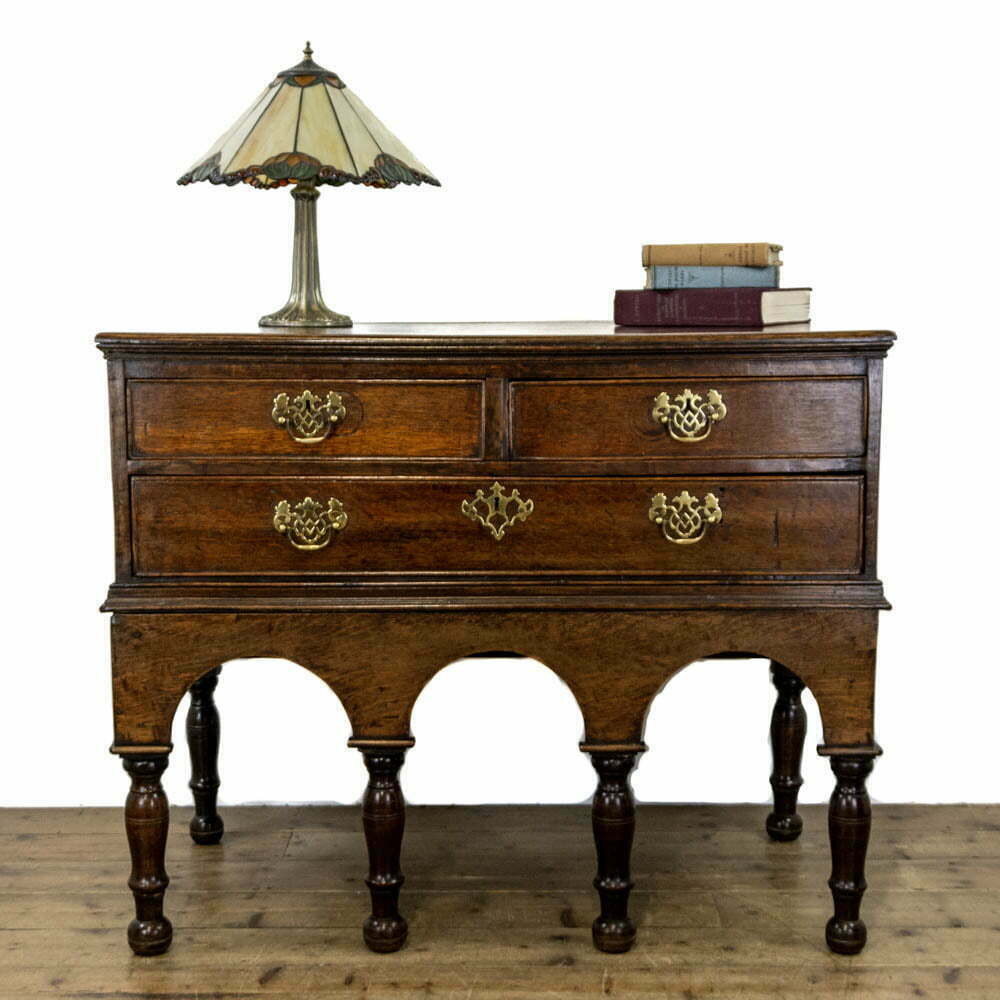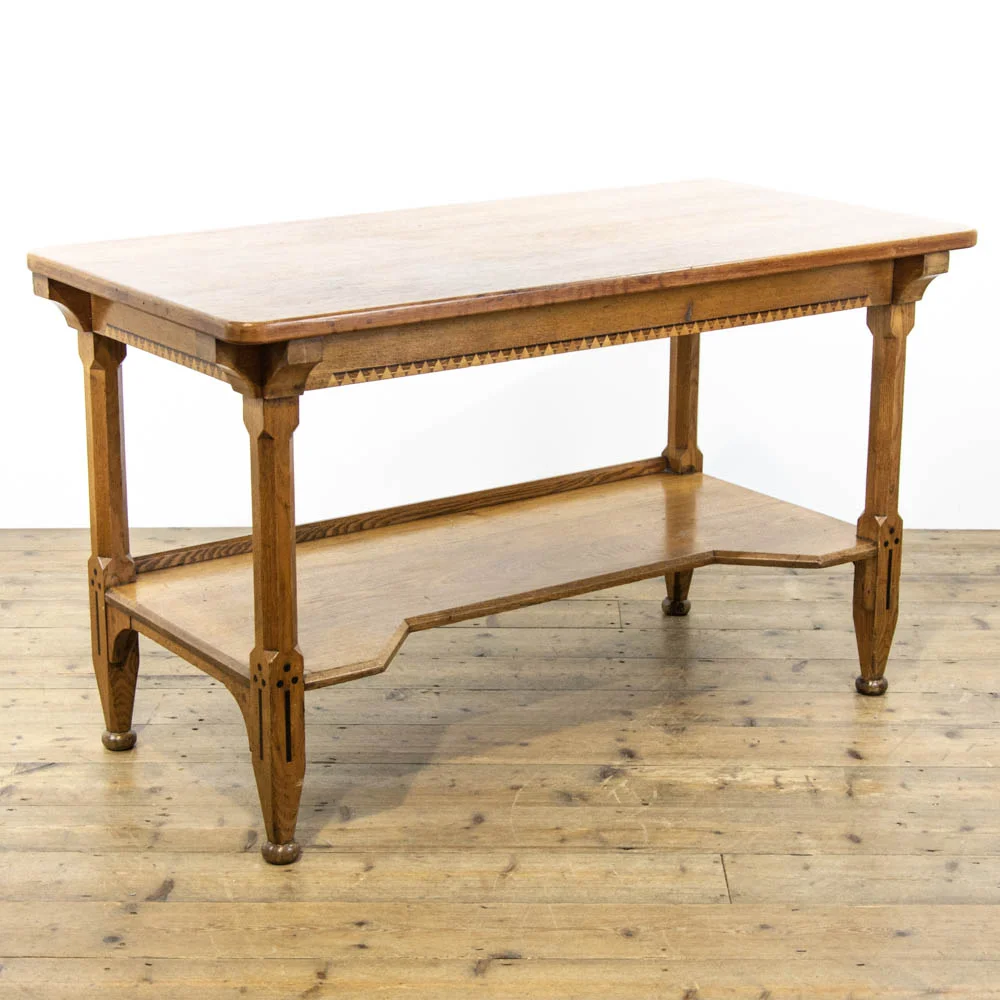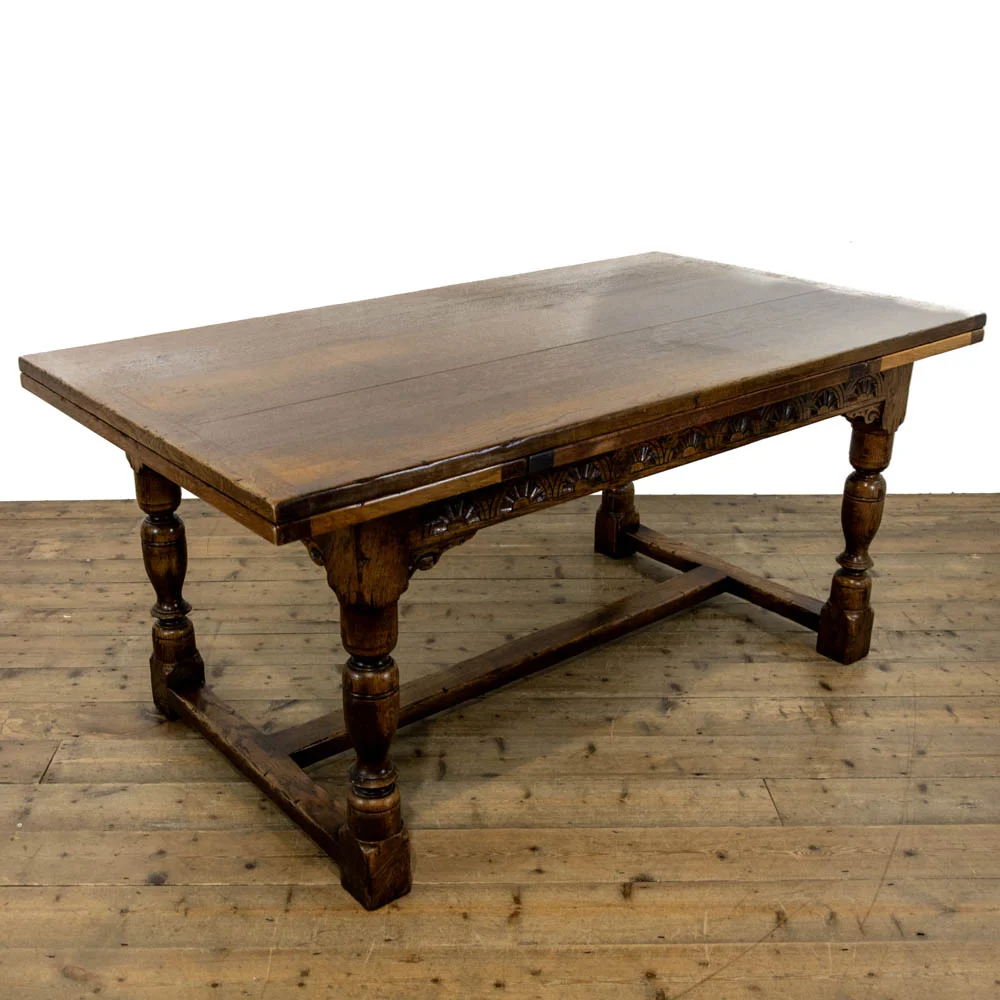Antique Tables Through The Eras
Antique tables style has had a wide and varied history, and today they will be the focus of the latest instalment of this series! If you would like to learn more about other antique pieces throughout time click here.
Tables have always served a number of different purposes within a household, most significantly the holding of meals as dining or kitchen tables, providing the focal point of a household where a family joins together. Dressing tables and side tables were also popular options, with side tables being the most versatile pieces as they can be placed throughout the home to hold many smaller items.
Material, size and decorative features provide the most insight into a piece’s function and the era it was produced in, and these will be the main features that are discussed in this blog. If you’d like to learn more about antique tables from the Georgian period right up to the 20th Century keep reading ….
GEORGIAN ANTIQUE TABLES
Wood is a key factor in tables of the time, with oak and later mahogany being favoured throughout the century the Georgian period spanned. Oak is still considered to be one of the most abundant, sturdy and durable choices. While mahogany is prized for its resistance to seasonal weather changes as well as its attractive colouring. Due to the nature of mahogany as an imported wood, it was highly sought after for its exclusivity, being accessible only to those who could afford to purchase it.
The major developments in the use of tables are seen in changes to dining customs of the period, before this time diners would have sat along one side of the table and been served from the other. Now diners were sitting either side of tables and they were increasing in size to accommodate the more elaborate dining practices.
This was primarily a transitional period for tables, with either the changes in progress or the groundwork being laid for the differences in design.
Antique table styles were generally lower during this period as chairs gained popularity over the high stools were previously favoured. There was not generally a great deal of emphasis on decoration; the exception is the development in variations of table legs, with styles such as barley twist and spider legs on tables rising in popularity.
Gateleg and tilt top tables also gained prominence as they were more compact and could be folded while not in use, while at the same time providing more leg space in comparison to their contemporary counterparts.

VICTORIAN ANTIQUE TABLES
Now we will move onto discussing antique table styles during the Victorian era. The number of woods used for making furniture diversified with more pieces being made from walnut and rosewood. Walnut became popular alongside the rise in carved furniture, as it is durable and notably easy to carve. Rosewood is sturdy, polishes well and has an appealing wood grain.
The difference between this and Georgian antique tables highlights the progress made in furniture making in this time, particularly in the area of woodcarving. Many pieces incorporated neoclassical or gothic elements. Another area of ornamentation in antique table styles that developed at this time was the addition of marble tops onto tables. However, this was somewhat exclusive to the upper echelons of society.
Another change to antique furniture styles that impacted their use within the home was the increasing size of furniture. The carved and ornate furniture was commonly owned by the wealthy and were subsequently designed to fill the space within grand houses. Victorian pieces can still work remarkably well in modern homes, becoming statement pieces within spaces. If you are working with smaller interiors but still enjoy Victorian style there are a number of pieces that can be incorporated such as drop leaf tables or many beautiful side and hall tables that can be repurposed as bedside or coffee tables to suit your needs.

20TH CENTURY ANTIQUE TABLES
The developments in 20th Century tables can not be discussed without first acknowledging the changes in manufacturing. Making furniture by machine began during the Victorian period but there was much contention around these processes with disputes around the quality in comparison to handmade furniture. There were many who preferred the handmade furniture’s aesthetic and character, with the Arts and Crafts Movement making this the focal point of their movement.
This process had been refined and become far more efficient in the 20th Century, and mass production of furniture had become commonplace. Due to this designs were often less tailored to the needs of the individual and were created to fit standard room sizes and layouts. There was also a rise in reproduction furniture, as the technological developments made it a much easier process to recreate tables in previous styles and manufacture an aged aesthetic.
Art Deco and Art Nouveau antique table styles also developed in this period with Art Nouveau centred on nature. For example, legs on tables would be shaped organically so that a piece could ‘flow’. Carvings in this style also tended to have a floral element. In the Art Deco style pieces were made with a greater focus on their geometry, with angular lines, minimising imperfections and the use of perfect circles being favoured. As such tables in this style can be seen as ‘sharper’ and almost as a rebuttal to Art Nouveau.

FINAL THOUGHTS ON ANTIQUE TABLES
To conclude, antique table styles have seen drastic changes throughout history, as these pieces of furniture adapted to practical uses and to different tastes. Compared with other pieces of furniture that have been discussed in the series, there is far more diversity of style in the legs, feet and aprons of tables. Antique tables are available in many sizes and styles so make the perfect starter piece if you want to get into antique collecting. If you would like to shop our range of antique table styles click here.
To keep up to date with our latest content and news, be sure to subscribe to our newsletter. We will send the latest business updates, exclusive discounts and much more straight to your email! Also, check out our Instagram for more design inspiration!

